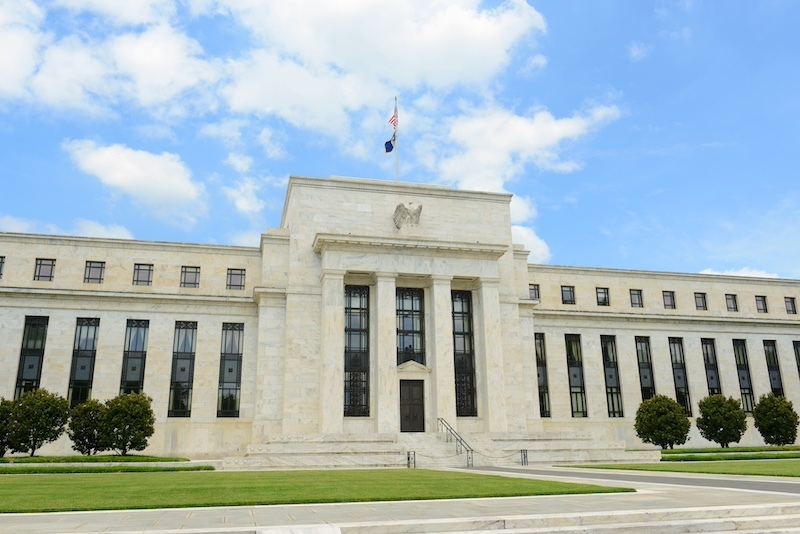This was too important not to share…
For months, Chief Income Strategist Marc Lichtenfeld has been shouting from the rooftops that the Federal Reserve shouldn’t be in a hurry to cut interest rates.
Now, he’s decided to tell the Fed himself.
Below, you’ll find Marc’s open letter to the members of the Federal Open Market Committee, in which he pleads with them to listen to reason and hold off on cutting rates.
Marc also just released an urgent video briefing about how a Fed rate cut could “slam shut a golden window of opportunity” for investors.
This could be your last chance to take advantage of a big income opportunity before it vanishes…
Click here to learn more.
– Nicole Labra, Senior Managing Editor
To: Jerome Powell; John Williams; Thomas Barkin; Michael Barr; Raphael Bostic; Michelle Bowman; Lisa Cook; Mary Daly; Beth Hammack; Philip Jefferson; Adriana Kugler; Christopher Waller
From: Marc Lichtenfeld
Subject: Let Me Buy You a Drink
Dear Members of the Federal Open Market Committee,
Thank you for your service. You have a pressure-filled job with high stakes for millions of your fellow citizens. Though folks are still feeling the sting of higher prices, inflation is now under control. While the most recent reading of 2.9% is not yet at your stated goal of 2%, it is below the national historical average of 3.3% going back to 1914.
It’s time to take a victory lap, head to the nearest tavern, and recount the raucous debates on interest rate policy that led to the recent sub-3% inflation reading. I tell you what… drinks are on me!
I’m hoping a boozy night might bring you some clarity (as boozy nights are known to do). You see, everyone expects you to cut interest rates when you meet next week. In fact, according to the federal funds futures market, there is a 100% chance that you will lower rates at the September meeting, including a 29% chance the cut will be by 50 basis points.
Even more astonishing is that the market believes there is an 88% chance of rates being at least a full percentage point lower by December.
This would be a huge mistake.
As you’re well aware, the Fed has a dual mandate to “promote maximum employment and stable prices.”
After several years of high inflation, prices are finally stable again.
However, a decline in interest rates would boost demand for goods and services in an already solid economy, pushing prices higher. If rates do fall by a full percentage point by the end of the year, I suspect we’ll see inflation back above 4% by the end of 2025.
Furthermore, rate cuts – while likely to make mortgages a bit cheaper – would send already unaffordable housing prices even higher. The housing bubble would inflate to even more ridiculous levels, making it nearly impossible for first-time buyers to purchase a home and thereby pulling rents higher.
I assume the reason for the looming rate cuts is the data showing that employment growth is slowing.
But here’s the thing: We’re still adding jobs. Mind you, not as many as we did during the post-COVID rebound, but the U.S. added 142,000 jobs in August, and annual pay was up 4.8%.
Initial jobless claims are at roughly the same level as they were two years ago. The most recent reading of 227,000 new claims is up from this year’s low of 194,000 in January, but it is also close to the lowest point in the past three months.
In June 2023, the number was as high as 261,000.
There were 7.7 million job openings in July. While that’s down from 8.8 million a year ago, it’s still nearly four times the number of people filing new and continuing jobless claims, and it means there are 1.1 jobs for each of the 7.1 million unemployed people who say they’d like to work.
Hiring is no longer happening at a furious pace, but firings and layoffs aren’t increasing either.
With GDP growth at 3%, it’s hard to imagine the jobs picture swinging violently to the downside in the near future.
The data simply doesn’t support a rate cut.
Think of it this way: Historically, under an average U.S. economy, we see 3.2% GDP growth, 3.3% inflation, 5.7% unemployment, and a 5.9% yield on the 10-year Treasury.
Today, GDP is growing at 3.0%, inflation is at 2.9%, unemployment is at 4.2%, and the yield on the 10-year Treasury is below 3.7%. Factory orders were also up 5% in July, their greatest increase since July 2020.
Does any of that sound like data that requires hitting the panic button?
It’d be like calling the fire department because you burnt your toast.

The problem is that we have become a society where everyone expects participation trophies. No one is ever allowed to feel uncomfortable.
We have become so accustomed to abnormally low rates over the past several decades that we now fear that any increase will slam the brakes on the economy – even though that clearly hasn’t happened in the most recent bout of rate hikes.
The absence of high inflation is not a reason to cut rates. Interest rates should be lowered in order to ensure maximum employment, not to ward off recession fears. Given that there are more open jobs than jobless people, the labor picture is still robust, even if it’s slowing.
Unfortunately, history shows that when you’ve cut rates, you’ve cut them too much and left them too low for too long. That’s what was responsible for the nearly double-digit inflation we experienced over the past few years.
Even more unfortunately, you’re about to overdo it again. And if prices spike as a result, you’ll have to go back to raising rates to ward off inflation. This kind of ping-ponging rate policy will do terrible damage to the economy.
Business leaders need to have a rough idea of what the economic landscape will look like so they can plan and invest for the future. But if rates are gyrating up and down, they’ll hunker down and wait for an all-clear signal before deploying capital.
If you leave rates unchanged, inflation should continue to cool. Perhaps the employment picture would worsen – perhaps not. If it does, you always have room to lower rates in the future. But if you cut rates now when it’s not necessary, you’ll be pouring lighter fluid on the previous inflation inferno that has been reduced to a small grass fire.
No one wants to see 4% or higher inflation – especially you.
So what do you say we hold off on cutting rates until we see some actual troublesome data and head to the bar instead? What’re you drinking? Order anything you want – but domestic only. After all, we have to protect American jobs.
Credit: Source link












![Just released: our 3 top small-cap stocks to consider buying before March [PREMIUM PICKS]](https://www.fool.co.uk/wp-content/uploads/2023/04/Dancing-1200x675.jpg)

